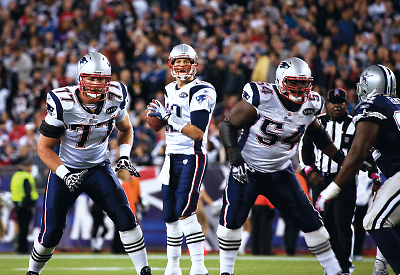“Deflategate” may be the word of the day in the sports world, but it is neither the first nor the last example of athletes cheating to gain an edge on competitors. Winning is everything to many athletes, no matter the cost to their integrity and health.
At APA’s 2015 annual meeting in Toronto, experts in sports psychiatry led a session on the history of cheating in sports and discussed ways to identify and treat the underlying mental conditions that may lead athletes to cheat on and off the field.
“The pressure to have continual praise given by fans is so strong that some athletes will go to any extreme to keep it—despite the risk of getting caught,” said Thomas Newmark, M.D., a professor of psychiatry at the Rowan School of Medicine in Stratford, N.J., and co-chair of the session.
As some of the more well-known sports scandals show—ice skater Tanya Harding’s planned assault on fellow competitor Nancy Kerrigan at the Olympic trials in 1991, cyclist Lance Armstrong’s use of performance-enhancing drugs, and New England Patriots quarterback Tom Brady’s alleged involvement with deflated footballs used by the team—some athletes are willing to sacrifice much to gain fame, money, success, and acceptance or, in the case of collegiate athletes, grades that will allow them to maintain eligibility, Newmark said.
Psychiatrists can step in and help athletes caught cheating by educating them about the error of their ways and helping them to cope with the stress of dealing with a suspension or the end of a career, said Eric Morse, M.D., a sports psychiatrist who works with professional, college, and youth athletes and teams.
Ironically, Morse explained, it is sometimes the psychiatrist who is pressured to cheat by providing a medical diagnosis that helps college athletes drop a course they are failing or “legalize” a banned medication with a back-dated prescription. Morse emphasized that it is important for physicians to always uphold the best ethical standards—regardless of pressures from coaches or the athletic directors—and to put the mental health needs of athletes first.
“Athletes with narcissistic, borderline, or antisocial personality are at higher risk of cheating behaviors,” Dan Begel, M.D., a cofounder of the International Society for Sport Psychiatry, said during the session. Begel explained that it is very possible for an athlete to acquire a personality disorder in the course of his or her athletic career due to the cultural valences that promote cheating.
“Athletes can develop a sense of entitlement that could contribute to a personality disorder, which could potentially lead to cheating,” Begel told Psychiatric News. “In addition, there is a tremendous amount of exploitation by coaches and owners and fans of these athletes’ talents. Once the athlete realizes that he or she is valuable only as long as the other people’s needs are met, it is a very degrading state of affairs. This realization can wound the athlete’s self-esteem and nurture the idea that ‘I need to take ownership of my own success at any cost.’ ”
Begel said that in order to treat personality disorders, psychiatrists must first understand the deeper motivations of cheating. “It is important to explore childhood and family and cultural dynamics to develop a treatment plan.”
Therapy tools highlighted during the session to treat athletes included cognitive-behavioral therapy, family therapy, dynamic therapy, and supportive therapy.
At the end of session, Newmark told Psychiatric News that he hoped the information helped attendees to better understand the dynamics of cheating and realize the importance of implementing a much-needed change in the culture of sports.
“At the end of the day,” Newmark said, “we want children and youth to know that sports are about fun, and not about winning at any cost. If we convey this message to athletes at a young age, we can change some of the mental health consequences associated with organized sports.” ■

